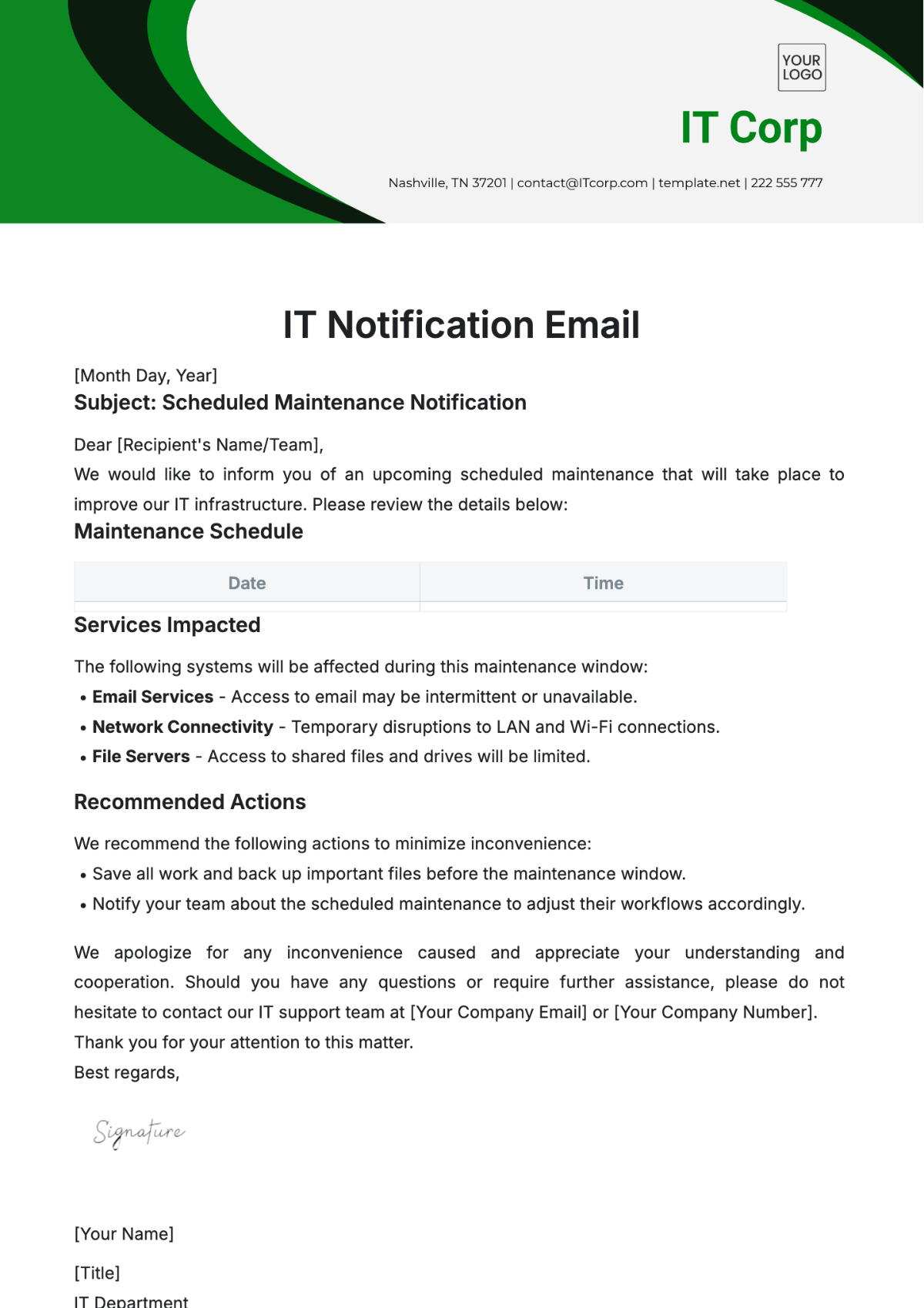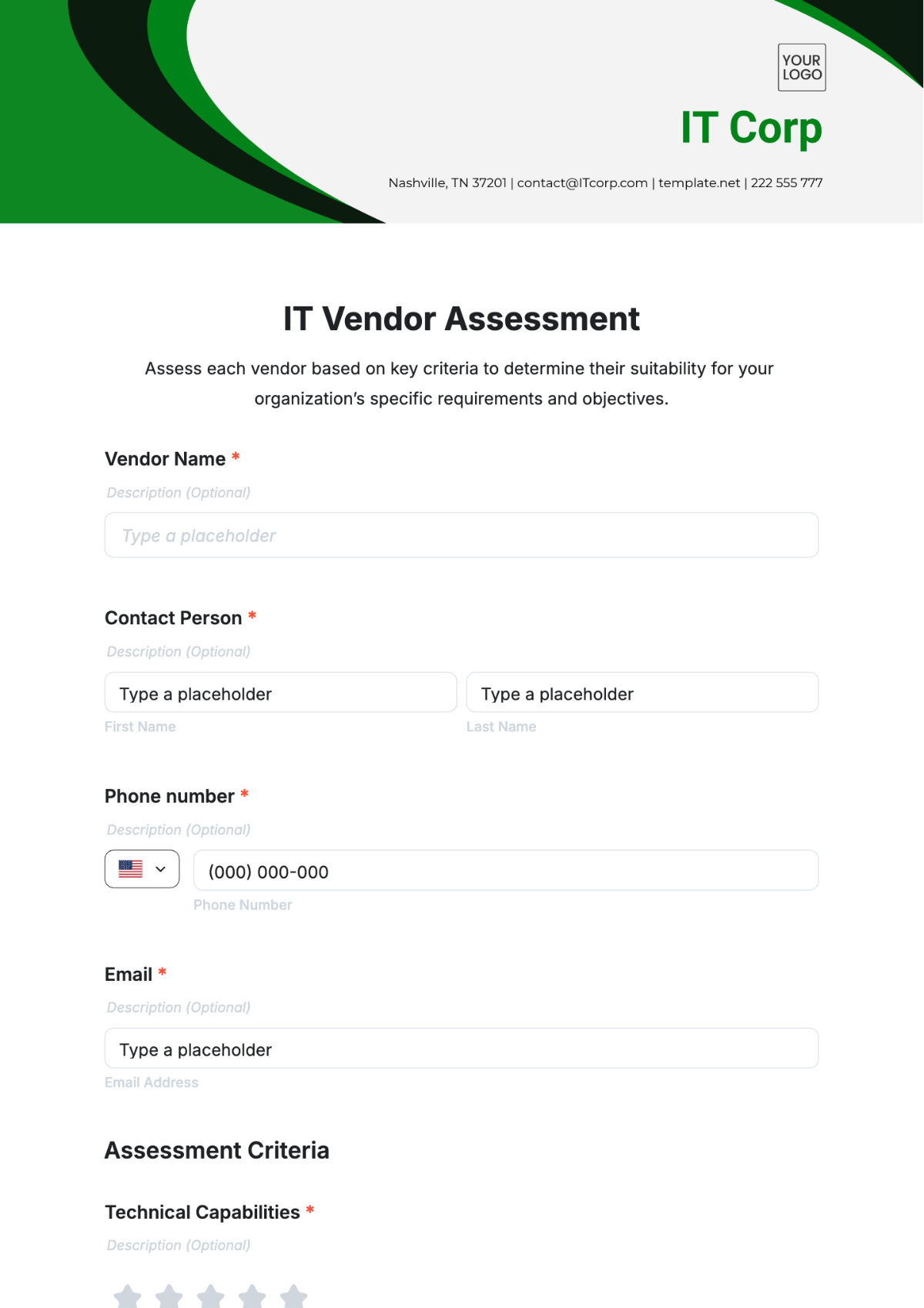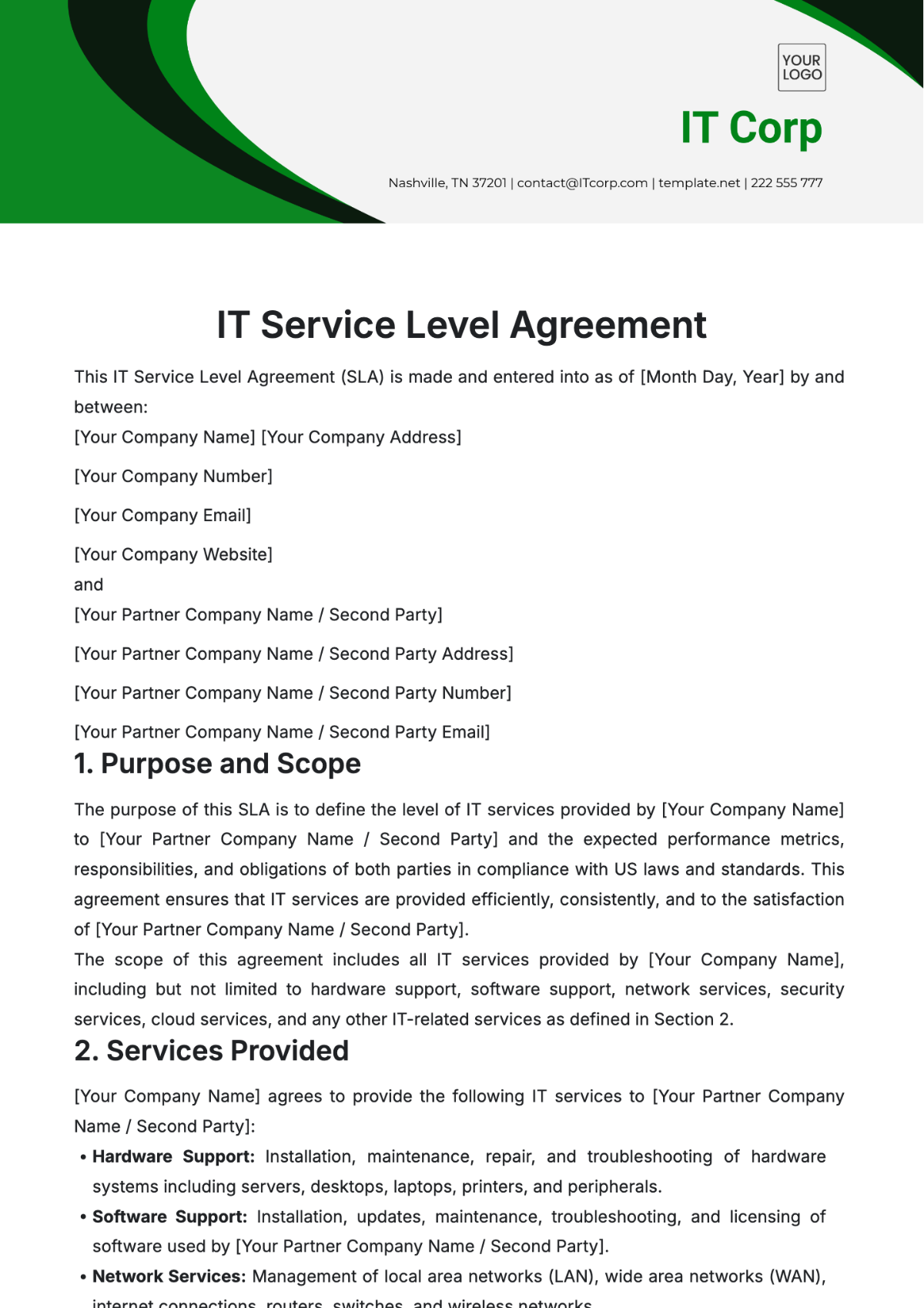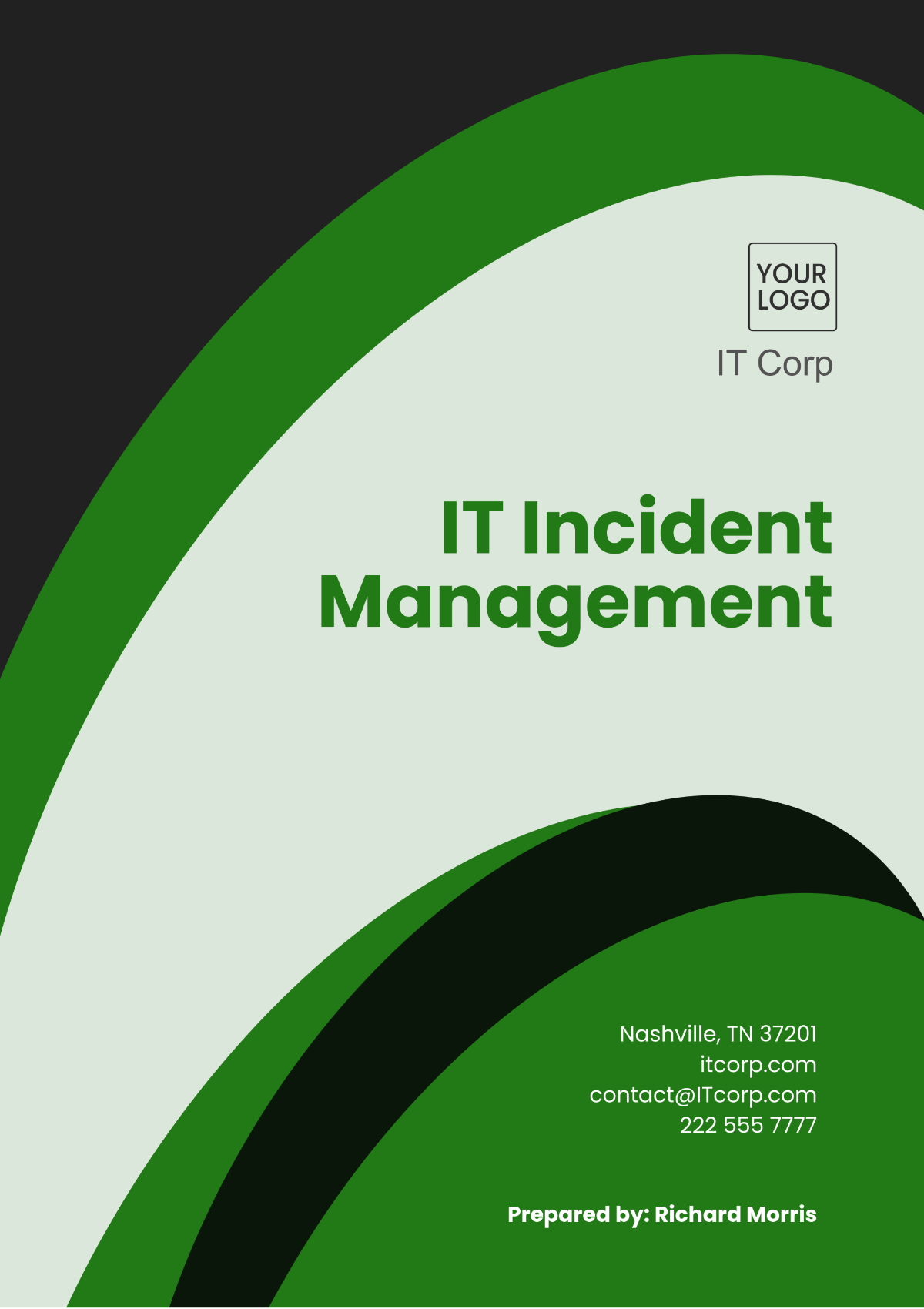IT Agile Sprint Planning
1. Introduction
1.1 Overview
Agile Sprint Planning is an integral aspect of the Agile framework, which emphasizes iterative progress and flexible responses to change. This document provides a comprehensive guide for conducting effective sprint planning at [Your Company Name]. Sprint planning is a collaborative process where the team sets goals, selects tasks from the product backlog, and outlines a strategy to deliver those tasks within the sprint's timeframe. This guide aims to ensure that sprint planning is methodical, thorough, and aligned with both short-term and long-term project objectives.
1.2 Purpose
The purpose of this document is to standardize the sprint planning process within [Your Company Name]. By providing clear guidelines and structured procedures, this document aims to enhance team alignment, improve task prioritization, and ensure the efficient use of resources. Effective sprint planning helps in setting realistic expectations, managing stakeholder demands, and ultimately achieving higher productivity and quality in deliverables.
1.3 Scope
This document encompasses all phases of sprint planning, from initial preparation to the final follow-up. It is intended for use by all team members involved in the Agile process, including product owners, Scrum masters, and development team members. The scope includes pre-planning activities, the sprint planning meeting, task assignment, effort estimation, and post-planning follow-up, providing a holistic approach to managing sprints effectively.
2. Pre-Planning Activities
2.1 Reviewing Product Backlog
2.1.1 Overview
The product backlog is a dynamic and prioritized list of features, enhancements, bug fixes, and technical debts that the team needs to address. Before the sprint planning meeting, reviewing the backlog ensures that it reflects the latest priorities and requirements. This review is crucial for setting a solid foundation for the sprint planning process and aligning the backlog with the strategic goals of [Your Company Name].
2.1.2 Steps
Update Backlog Items: Regularly update each backlog item with relevant information such as recent changes in requirements, user feedback, or technical constraints. Ensure that each item has a clear description, acceptance criteria, and any dependencies or constraints documented.
Prioritize Items: Work closely with stakeholders, including customers and business representatives, to prioritize backlog items based on factors such as business value, urgency, and impact. Use prioritization techniques like MoSCoW (Must have, Should have, Could have, Won’t have) to categorize items and facilitate decision-making.
Define Acceptance Criteria: Clearly define what constitutes 'done' for each backlog item. Acceptance criteria should be specific, measurable, and agreed upon by the team to avoid ambiguity and ensure that deliverables meet the required standards. These criteria help in verifying the completeness and quality of the work.
2.2 Setting Sprint Goals
2.2.1 Overview
Sprint goals provide a focused direction for the team, outlining what they aim to achieve by the end of the sprint. These goals should be aligned with the overall product vision and strategic objectives of [Your Company Name]. Clear and well-defined sprint goals help in maintaining team motivation, ensuring coherence in task execution, and facilitating progress tracking.
2.2.2 Steps
Identify Key Objectives: Engage with stakeholders to identify key objectives for the sprint that are aligned with the broader project goals. These objectives should address high-priority items from the product backlog and contribute to significant progress towards the product vision.
Draft Goals: Create draft goals that are specific, measurable, attainable, relevant, and time-bound (SMART). Ensure that these goals reflect the critical priorities for the sprint and are feasible given the team’s capacity and the sprint’s duration.
Review and Refine: Collaborate with the team to review the draft goals. Discuss their feasibility, relevance, and alignment with the product vision. Refine the goals based on team feedback and any new insights to ensure that they are realistic and achievable within the sprint timeframe.
2.3 Preparing for the Sprint Planning Meeting
2.3.1 Overview
Preparation is key to a successful sprint planning meeting. Adequate preparation ensures that the meeting is productive, focused, and efficient. This involves gathering relevant documentation, coordinating with stakeholders, and setting the agenda for the meeting.
2.3.2 Steps
Schedule the Meeting: Schedule the sprint planning meeting well in advance to ensure that all relevant stakeholders can attend. Use a shared calendar to find an optimal time that accommodates all participants, including remote team members if necessary.
Prepare Documentation: Compile all necessary documentation, such as the updated product backlog, previous sprint review notes, and any relevant performance metrics. Ensure that the documentation is easily accessible to all participants, preferably through a shared collaboration tool.
Communicate Agenda: Share the meeting agenda with participants ahead of time. The agenda should outline the key topics to be discussed, including sprint goals, backlog items, task estimation, and any other relevant items. This allows participants to prepare effectively and contribute meaningfully to the discussion.
3. Sprint Planning Meeting
3.1 Meeting Agenda
3.1.1 Overview
The sprint planning meeting is a collaborative session where the team defines the sprint goals, selects backlog items, and develops a plan to achieve those goals. A well-structured agenda ensures that the meeting remains focused and covers all essential topics.
3.1.2 Agenda Items
Review Sprint Goals: Start the meeting by reviewing and finalizing the sprint goals. Ensure that the goals are clear, achievable, and aligned with the product vision. Discuss how each goal contributes to the overall project objectives.
Select Backlog Items: Review the prioritized backlog items and select those that will be included in the sprint. Consider factors such as the team’s capacity, the estimated effort for each item, and the alignment with the sprint goals. Use techniques like MoSCoW or Kano model to aid in selection.
Estimate Effort: Estimate the effort required for each selected backlog item. Use estimation techniques such as story points, t-shirt sizes, or time-based estimates. Engage the team in estimation discussions to ensure a shared understanding of the complexity and effort involved.
Plan Tasks: Break down selected backlog items into actionable tasks. Assign tasks to team members based on their skills, availability, and workload. Create a detailed task plan that outlines who will do what, by when, and any dependencies or prerequisites.
Review Capacity: Assess the team’s capacity for the sprint, considering factors such as team availability, holidays, and other commitments. Compare the estimated effort for the selected tasks with the team’s capacity and adjust the plan as necessary to avoid overcommitment.
3.2 Role of the Product Owner
3.2.1 Overview
The product owner plays a pivotal role in sprint planning by providing input on backlog priorities, clarifying requirements, and ensuring alignment with the product vision. Their involvement is crucial for setting clear goals and ensuring that the sprint plan meets business needs.
3.2.2 Responsibilities
Present Backlog Items: Present and explain the backlog items that are candidates for the sprint. Provide context, such as business value and user impact, to help the team understand the importance of each item.
Clarify Requirements: Address any questions or ambiguities related to the backlog items. Provide detailed explanations and additional information as needed to ensure that the team has a clear understanding of what needs to be done.
Prioritize Items: Ensure that the backlog items are prioritized based on their importance and urgency. Work with stakeholders to validate priorities and make any necessary adjustments to reflect changing business needs or new information.
3.3 Role of the Scrum Master
3.3.1 Overview
The Scrum Master facilitates the sprint planning meeting and ensures that the process adheres to Agile principles. They play a key role in maintaining focus, resolving issues, and supporting the team throughout the planning process.
3.3.2 Responsibilities
Facilitate the Meeting: Guide the team through the sprint planning process, ensuring that all agenda items are addressed and that the meeting stays on track. Use facilitation techniques to manage discussions and keep the meeting productive.
Resolve Issues: Address any issues or impediments that arise during the planning process. Help the team identify solutions and workarounds to ensure that the planning process proceeds smoothly.
Ensure Adherence to Agile Practices: Promote the use of Agile best practices and principles during the sprint planning meeting. Ensure that the team’s approach to planning is aligned with Agile values and methodologies.
3.4 Role of the Development Team
3.4.1 Overview
The development team is responsible for providing estimates, breaking down backlog items into tasks, and committing to delivering the selected items within the sprint. Their input is essential for creating a realistic and achievable sprint plan.
3.4.2 Responsibilities
Estimate Effort: Provide estimates for the effort required to complete each backlog item. Engage in discussions to reach a consensus on estimates and ensure that they are based on a shared understanding of the work involved.
Break Down Tasks: Decompose backlog items into smaller, manageable tasks. Identify dependencies, prerequisites, and any potential challenges associated with each task.
Commit to Deliverables: Commit to delivering the selected backlog items within the sprint timeframe. Ensure that the commitments are realistic and aligned with the team’s capacity and the sprint goals.
4. Task Assignment and Estimation
4.1 Task Breakdown
4.1.1 Overview
Breaking down backlog items into tasks helps the team understand the specific work required and facilitates effective planning and tracking. This process ensures that tasks are manageable and clearly defined.
4.1.2 Steps
Identify Subtasks: Decompose each backlog item into subtasks that represent discrete units of work. Ensure that subtasks are small enough to be completed within a short period and are clearly defined.
Assign Responsibilities: Assign each subtask to a team member based on their skills, expertise, and availability. Ensure that task assignments align with team members' strengths and current workload.
Define Deadlines: Set deadlines for each subtask to ensure timely completion. Consider dependencies and potential bottlenecks when establishing deadlines to avoid delays and ensure smooth progress.
4.2 Estimating Effort
4.2.1 Overview
Effort estimation is a crucial step in sprint planning, as it helps the team gauge the amount of work required and set realistic expectations for the sprint. Accurate estimation is key to effective planning and resource management.
4.2.2 Methods
Story Points: Use story points to estimate the relative effort required for each backlog item. Story points provide a way to measure complexity and effort without relying on specific time estimates.
Time Estimates: Estimate the time required to complete each task. Time-based estimates can provide a more concrete understanding of the work involved but should be used in conjunction with other estimation methods.
Expert Judgment: Leverage the experience and expertise of team members to provide accurate estimates. Encourage team members to share their insights and perspectives on the complexity and effort required for each task.
4.3 Capacity Planning
4.3.1 Overview
Capacity planning involves assessing the team’s ability to complete the planned tasks within the sprint. This process helps ensure that the sprint plan is realistic and achievable, considering the team’s availability and workload.
4.3.2 Steps
Assess Team Availability: Evaluate the availability of team members, taking into account factors such as vacations, holidays, and other commitments. Consider any potential absences or changes in team composition during the sprint.
Calculate Capacity: Calculate the total capacity available for the sprint based on team members' availability and estimated effort. Use this information to determine the amount of work the team can realistically complete within the sprint.
Adjust Plan: Adjust the sprint plan as necessary to align with the team’s capacity. Prioritize tasks, reassign work, or adjust deadlines to ensure that the plan is feasible and achievable.
5. Post-Planning Follow-Up
5.1 Sprint Backlog
5.1.1 Overview
The sprint backlog is a detailed plan that outlines the tasks to be completed during the sprint. It serves as a guide for the team, providing a clear roadmap for achieving the sprint goals and tracking progress.
5.1.2 Components
Selected Backlog Items: Include a list of the backlog items selected for the sprint. Provide a summary of each item, including its description, priority, and any relevant acceptance criteria.
Tasks and Subtasks: Detail the tasks and subtasks associated with each backlog item. Include information on who is responsible for each task and any dependencies or prerequisites.
Effort Estimates: Provide estimates for each task and subtask, including the total effort required for each backlog item. Use these estimates to track progress and manage expectations throughout the sprint.
5.2 Communication Plan
5.2.1 Overview
A communication plan is essential for keeping all team members and stakeholders informed about the sprint plan, progress, and any changes. Effective communication helps ensure transparency and alignment throughout the sprint.
5.2.2 Steps
Share Sprint Backlog: Distribute the sprint backlog to all team members and stakeholders. Ensure that everyone has access to the latest version and understands the tasks, deadlines, and goals for the sprint.
Schedule Regular Check-Ins: Schedule regular check-ins or stand-up meetings to monitor progress, address issues, and review any changes to the plan. These meetings provide an opportunity for team members to share updates and collaborate on solutions.
Update Stakeholders: Provide updates to stakeholders on sprint progress, including any changes to the plan or schedule. Use status reports, dashboards, or other communication tools to keep stakeholders informed and engaged.
5.3 Sprint Review and Retrospective
5.3.1 Overview
The sprint review and retrospective are critical components of the Agile process, providing an opportunity to assess performance, gather feedback, and identify areas for improvement. These activities help ensure continuous improvement and alignment with project goals.
5.3.2 Steps
Conduct Sprint Review: Hold a sprint review meeting to present the completed work to stakeholders. Gather feedback on the deliverables, discuss any issues or concerns, and assess whether the sprint goals have been met.
Hold Retrospective Meeting: Conduct a retrospective meeting to reflect on the sprint. Discuss what went well, what could be improved, and any action items for addressing issues or enhancing the process. Engage the entire team in the discussion to gather diverse perspectives and insights.
Implement Improvements: Use the feedback and insights from the retrospective to implement improvements in the sprint planning and execution process. Make necessary adjustments to enhance team performance, address recurring issues, and optimize workflows.
6. Metrics and Reporting
6.1 Key Metrics
6.1.1 Overview
Tracking key metrics provides valuable insights into the performance of the sprint and helps identify areas for improvement. Metrics help in assessing progress, evaluating team performance, and making data-driven decisions.
6.1.2 Metrics
Sprint Velocity: Measure the amount of work completed during the sprint, typically expressed in story points. Sprint velocity provides an indication of the team’s productivity and helps in forecasting future sprint capacity.
Burndown Chart: Track the progress of task completion over time using a burndown chart. This chart visualizes the amount of work remaining versus the time left in the sprint, helping to identify any deviations from the plan.
Cycle Time: Measure the time taken to complete individual tasks from start to finish. Cycle time provides insights into the efficiency of the development process and helps in identifying potential bottlenecks.
6.2 Reporting
6.2.1 Overview
Regular reporting provides transparency into the sprint’s progress and performance. It helps stakeholders stay informed and supports decision-making by providing an accurate picture of the sprint’s outcomes and any challenges encountered.
6.2.2 Types of Reports
Sprint Progress Report: Provide an overview of the sprint’s progress, including completed tasks, any issues encountered, and the status of remaining tasks. Highlight key achievements and any deviations from the plan.
Velocity Report: Report on the team’s velocity, including the number of story points completed and any changes compared to previous sprints. Use this information to assess trends and adjust future sprint planning.
Retrospective Summary: Summarize the findings and action items from the retrospective meeting. Include any identified areas for improvement, planned changes, and commitments for addressing issues.
7. Best Practices and Tips
7.1 Effective Communication
7.1.1 Overview
Effective communication is essential for a successful sprint planning process. It ensures that all team members are aligned, informed, and engaged, leading to a more productive and collaborative environment.
7.1.2 Tips
Be Clear and Concise: Communicate goals, tasks, and expectations clearly to avoid misunderstandings. Use simple and straightforward language to convey information effectively.
Encourage Open Dialogue: Foster an environment where team members feel comfortable sharing their thoughts and concerns. Encourage open dialogue and active listening to address issues and gather diverse perspectives.
Use Collaborative Tools: Utilize collaborative tools such as project management software, chat platforms, and document sharing systems to facilitate communication and collaboration among team members.
7.2 Continuous Improvement
7.2.1 Overview
Continuous improvement involves regularly reviewing and refining the sprint planning process to enhance efficiency and effectiveness. It helps in adapting to changing needs and optimizing workflows.
7.2.2 Tips
Gather Feedback: Collect feedback from team members and stakeholders after each sprint. Use surveys, interviews, or feedback sessions to gather insights on the sprint planning process and overall performance.
Analyze Results: Review sprint metrics and performance data to identify trends, strengths, and areas for improvement. Analyze the results to understand what worked well and what needs to be adjusted.
Implement Changes: Make adjustments to the sprint planning process based on feedback and analysis. Implement changes to address identified issues, enhance team performance, and improve overall effectiveness.
7.3 Adapting to Change
7.3.1 Overview
Adapting to change is a fundamental aspect of the Agile methodology. Being flexible and responsive to changes helps teams handle unforeseen challenges and maintain progress towards their goals.
7.3.2 Tips
Be Prepared for Change: Anticipate potential changes and have contingency plans in place. Stay informed about potential risks and develop strategies for managing changes effectively.
Stay Agile: Maintain flexibility in the sprint plan to accommodate changes and new information. Be willing to adjust priorities, tasks, and deadlines as needed to address evolving requirements.
Communicate Changes: Ensure that any changes to the plan are communicated promptly to all relevant stakeholders. Provide clear explanations and updates to keep everyone informed and aligned.

















































